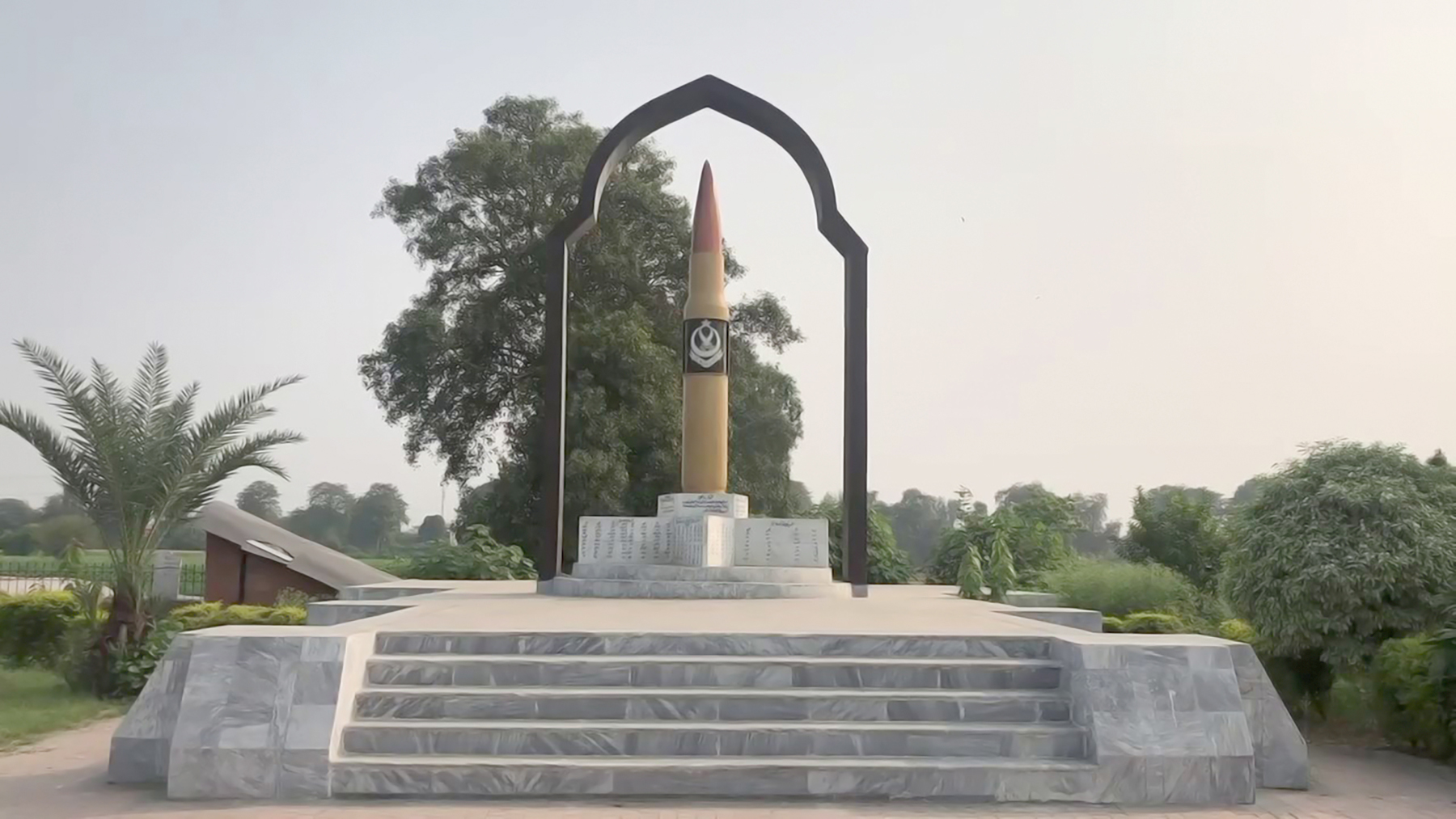A COMMENT FROM A SENIOR FIGURE ABOUT “ZERO-RANGE” WEAPONS COULD SIGNAL A DRAMATIC AND DANGEROUS SHIFT IN ISLAMABAD’S NUCLEAR STRATEGY
SITARA NOOR
As Pakistan celebrated the 25th anniversary of its first nuclear tests last month, it also appeared to share more details than usual about its current nuclear posture. Speaking at a seminar hosted by the Institute of Strategic Studies Islamabad on May 24, retired Lt. Gen. Khalid Kidwai provided new details of Pakistan’s otherwise ambiguous nuclear doctrine. What Kidwai says matters because he is currently an advisor to the country’s National Command Authority (NCA), which controls research and development and all other policy matters concerning nuclear weapons? He’s also the former director-general of the Strategic Plans Division (SPD), which is responsible for formulating nuclear policy and strategy as well as the security of nuclear assets.
During his address, he reiterated some of the long-standing positions of Pakistan’s nuclear policy, such as the strength of its nuclear triad based on land, air, and sea-based capabilities to deter India especially the Indian military’s so-called Cold Start doctrine, which envisages a limited war through quick mobilization of unified battle groups to conduct operations inside Pakistani territory without crossing Islamabad’s nuclear threshold. He also discussed what’s known as full-spectrum deterrencea policy aimed at responding to a range of threats from India. But he went further.
Kidwai expanded the scope of this doctrine by explaining what he called vertical and horizontal dimensions. In his words, full-spectrum deterrence “comprises horizontally of a robust tri-services inventory of a variety of nuclear weapons … that is held on land with the Army Strategic Force Command, the ASFC; at sea with the Naval Strategic Force Command, the NSFC; and in the air with the Air Force Strategic Command, the AFSC.” Most striking was his statement that “vertically the spectrum encapsulates adequate range coverage from 0 meters to 2,750 kilometers [about 1,700 miles] as well as nuclear weapons destructive yields at three tiers strategic, operational, and tactical.” Reducing the minimum range to 0 meters is unprecedented and, if implemented, points to a major shift in Islamabad’s nuclear policy thinking.
Talk of zero-range weapons suggests that Pakistan is either going to develop artillery shells as the United States, Soviet Union, and United Kingdom did during the Cold Warraising questions of whether it is going to be an M28/M29 Davy Crockett-style recoilless rifle system, the smallest weapon in the U.S. nuclear arsenal, developed during the 1950s as a front-line weapon with yields as low as a fraction of a kilotonor it could be a hint that Pakistan could possibly lay nuclear land mines across the India-Pakistan border to deter Indian advances. Observers, especially in India, are left wondering whether this statement is based on some existing scientific research and design testing and necessary doctrinal thought process. Kidwai’s statement does not provide any such details, and in the spirit of ambiguity that Pakistan seems to have benefited from, there is unlikely to be a follow-up soon to clear the air.
Indeed, Pakistan has always kept its nuclear policy vague and deliberately ambiguous; nonetheless, its missile ranges are the only aspect that has always been announced publicly through an official press release after every missile test. Prior to Kidwai’s statement, the officially announced lowest range in Pakistan’s nuclear inventory was the Nasr, or Hatf-9 ballistic missile, with a range of 60 kilometers (about 37 miles). The solid-fueled tactical ballistic missile was projected to be a response to India’s Cold Start doctrine. When it first test-fired the Nasr missile in 2011, Pakistan received huge flak from both Indian and Western scholars for its potential security risks and command and control challenges. The purported risks of employing Nasr ranged from the lowering of nuclear threshold to the possibility of an accidental or unauthorized launch if command and control of this short-range missile was delegated to local commanders in the battlefield.
The upper limit of 2,750 kilometers refers to the land-based surface-to-surface medium-range ballistic missile Shaheen-3, which was first test-fired in 2015 with the stated aim to reach the Indian islands of Andaman and Nicobar, thereby denying New Delhi the strategic bases for a potential second-strike capability. The upper limit was carefully restricted to 2,750 kilometers to signal that Pakistan’s nuclear missile program is only India-specific and does not pose a threat to any other country in the region and beyond.
Apart from Kidwai’s latest statement, there is no other information available to determine whether the zero-range announcement refers to a technical milestone in Pakistan’s nuclear development or serves as a rhetorical escalation. As an advisor, Kidwai has an important yet limited role in official policymaking, and there is a possibility that this assertion is a reflection of his personal opinion and not a statement of an official position. However, in the absence of any official statement, his declaration will largely be viewed as a new element of Pakistan’s nuclear policy. The bigger question is what strategic objective Pakistan wishes to achieve by going below the already controversial 60-kilometer range to zero-range weapons. As full-spectrum deterrence is aimed at plugging the perceived gaps in Pakistan’s deterrence posture, the apparent announcement of a zero-range policy within the scope of full-spectrum deterrence seems to have developed partly in response to a growing perception in New Delhi that India’s 2019 airstrikes on Balakot in mainland Pakistan instigated by an alleged Pakistan-sponsored suicide attack on Indian forces in Pulwama, a small town in Indian-held Kashmir have called Pakistan’s nuclear bluff.
It is important to recall that in order to defend Nasr’s development and its role in nuclear planning, Pakistani officials have often contended that use of any nuclear weapons on the battlefield would have strategic consequences. While this position might have allayed Western concerns regarding Pakistan’s attempt to lower the nuclear threshold, it may also have inadvertently made the use of Nasr less than credible in the eyes of Indian policymakers.
Sitara Noor, a research fellow at HU.


